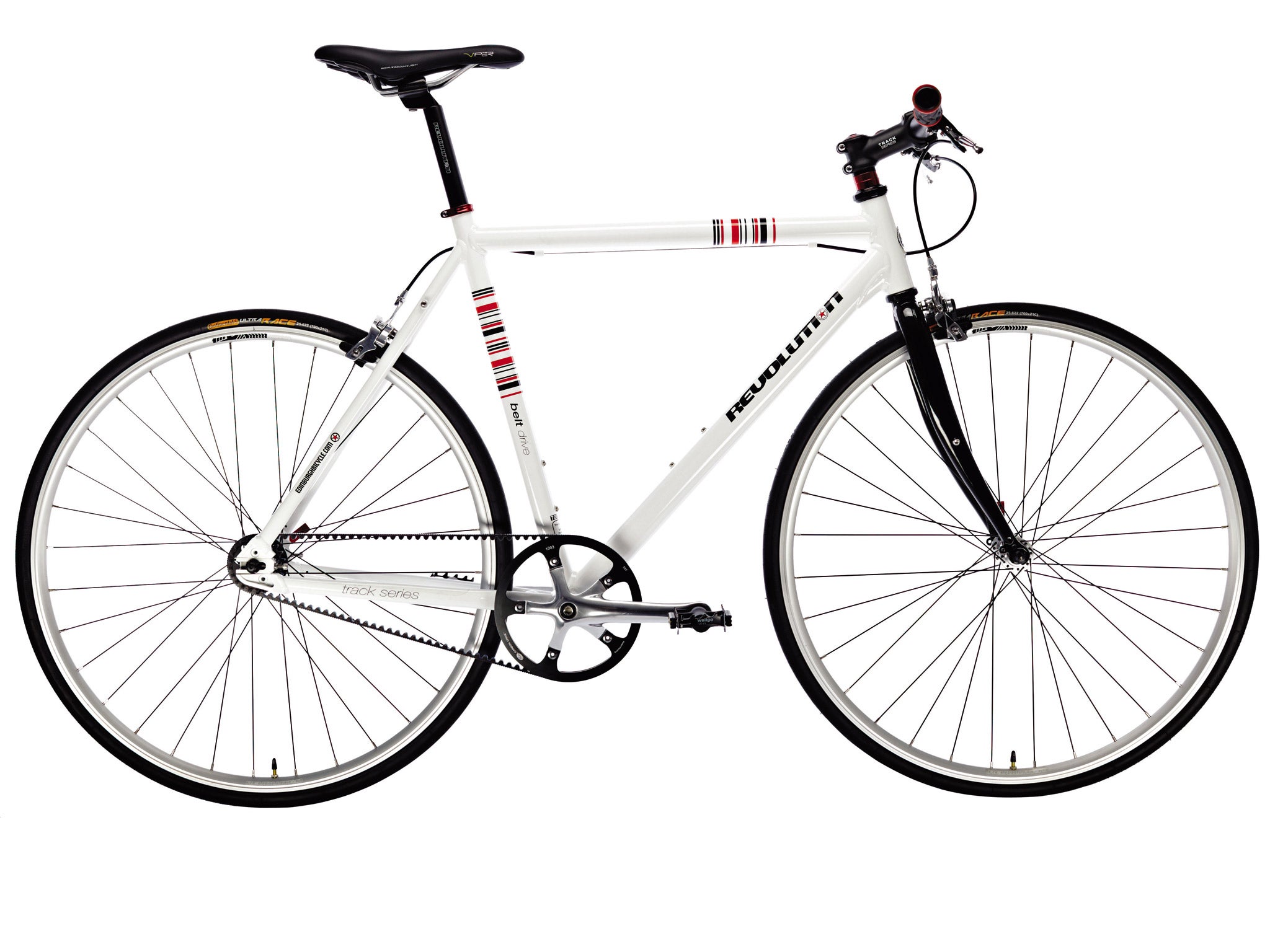Wheels, Etc: Revolution Belter '12
A chain-free bike – but it is it a belting ride?

Price: £599.99
Weight: 9.9kg
Frame: Aluminium
Transmission: Gates Carbon
Drive Belt: edinburghbicycle.com
It's a testament to the genius of the bicycle that for the 130 years or so since man realised penny farthings weren't the safest or most practical conveyance, their design hasn't really changed. Diamond-shaped frame; wheels; saddle; handlebars. And, driving it all, a chain, which grew longer and gained the ability to shift but remained a series of metal links transferring energy from foot to floor.
There is, as with all things, another way, and the chain's supremacy is being slowly and quietly shifted by that other basic means of linking one cog to another: the belt drive. The Revolution Belter '12 from the Edinburgh Bicycle Co-operative is the latest to make the switch, and among the most affordable. A flighty, single-speed city runaround with an upright riding position and wide handlebars for stability while weaving through traffic, it begs you to zip around a little faster, while no ounce of effort seems to go to waste.
The Belter looks smart, too, but what separates it is the sensation of its belt. Snobbish cyclists like me wince at the grate and clatter of poorly maintained bikes, and obsessively clean our own to achieve the joy of the silent ride, when all that can be heard is the unchained melody of wind and tyres rumbling over tarmac. But clashing metal wants to be noisy, and oil, the only way to keep things smooth, is a compromise because it collects dirt, which grinds and degrades moving parts. Chains also stretch; my fixie has got through 10 or so in four years.
The Belter is silent without trying. Its belt is made of carbon fibre and needs no lubrication and will not stretch. It will wear, inevitably, and needs an occasional rinse to keep out dirt, but lasts at least twice as long as a metal chain. In the meantime, it needs barely any maintenance. No more oily rags, dirty trousers or black fingernails. It's perfect for the cyclist who values clean hands and a bike that just works. So why, I wondered as I rode about town on a Revolution, do we still bother with chains at all?
The rise of the belt, led by the American Gates Corporation, has indeed been slow. The STRiDA, that odd triangular bike that resembles a laundry rack on tiny wheels, has carried a belt for 25 years. More recently, bigger manufacturers have dabbled (most notably the Trek District) but momentum is slow because belts come with drawbacks. They cannot shift, so bikes are limited to a single or fixed gear, or rear hubs that contain gears, which are at least gaining in popularity and range. More crucially, a belt cannot be unlinked like a chain, which, if you look at one, runs through the rear triangle of a bike frame. If the belt can't open, then the frame must, usually at the rear dropout; fixing the rear wheel closes it again.
Existing bikes can't be converted for use with a belt drive. New frames, meanwhile, must be designed with a belt in mind, and are generally more expensive. But many more are being made and presented at the trade shows. They will surely tip into the mainstream when Shimano and the big bike brands get involved. In the meantime, the Belter is a speedy sign of what is to come.
Join our commenting forum
Join thought-provoking conversations, follow other Independent readers and see their replies
Comments
Bookmark popover
Removed from bookmarks